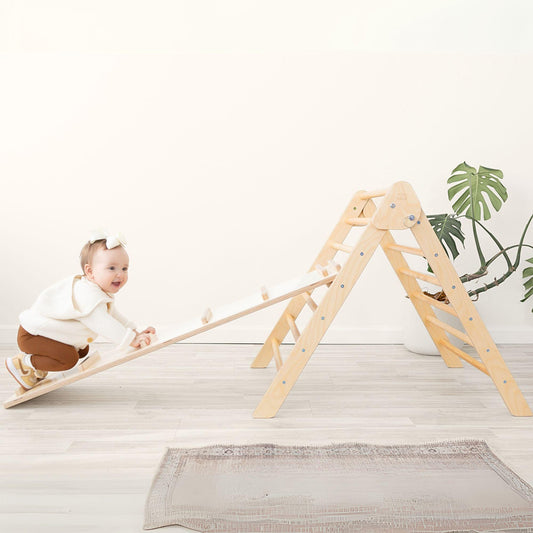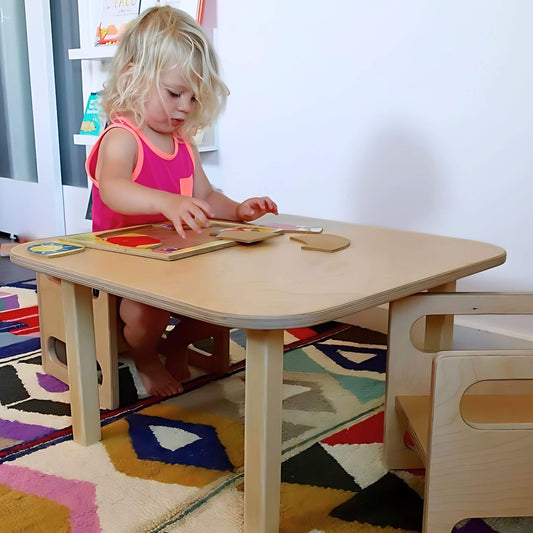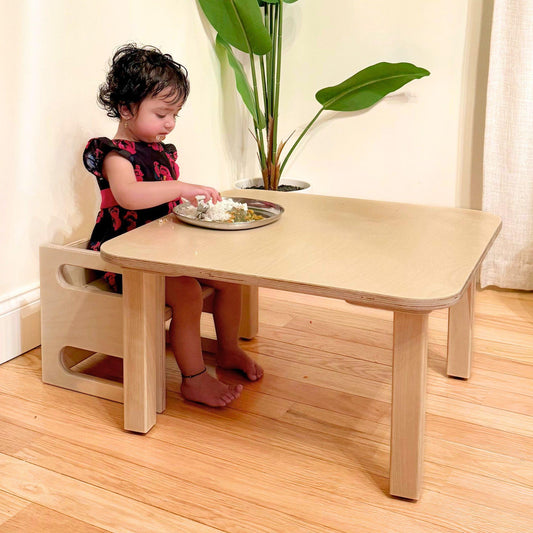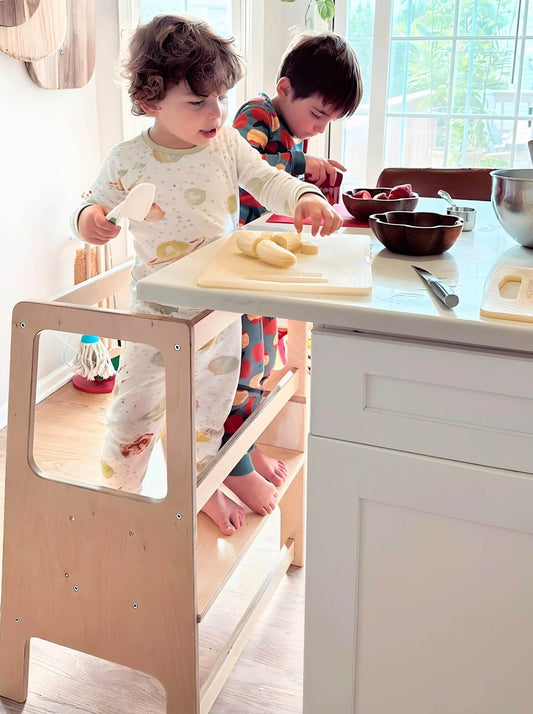
Yes, You Should Be Part of Your Child's Playtime – Here's How
Share
Think playtime is just for kids? Think again. Research shows that the more time parents spend playing with their children, the higher their children’s sense of well-being and emotional development. In fact, a 2023 study published in Frontiers in Psychology found that both mothers’ and fathers’ leisure time and educational interaction significantly boost a child’s well-being, and that this impact can be even greater depending on the child’s academic performance.
And the payoff isn’t just emotional. Regular play between parent and child fosters stronger communication, empathy, and trust. Even 10 to 15 minutes of focused play a day can dramatically improve your connection with your child and reduce unwanted behaviors. Not to mention, it's a precious window into their world: a chance to see how they think, feel, and grow in real-time. Still unsure how to get involved in your child’s play without interrupting or taking over? Whether your child is glued to a touchscreen, fascinated by your makeup bag, or running circles in the backyard, there are meaningful ways to join in:
Join In (Even If They’re Already Playing!)
If your child is already deep into a touchscreen game or YouTube show, don’t walk away; pull up a seat. Today, screen time is part of everyday life for kids. In fact, around 75% of children under two and 64% of those aged two to five use digital media daily, with many clocking in over an hour a day, according to global research on screen time. But there’s a healthy way to approach it: co-using media. Sit beside your child and ask if you can play or watch with them. Touchscreen laptops like the HP 15" model feature ultra-wide screens — perfect for parents and children to share when playing touch-friendly puzzle games like Logica or Geometry Vibes. Remember, your presence can help them build media literacy skills. You can ask questions like, “What do you think we should do next?” to spark their problem-solving skills.
This kind of interaction transforms screen time from a passive activity into an opportunity for bonding and learning. Instead of issuing time limits and restrictions, you become a partner in their digital world, guiding them through choices and helping them process what they see. As The Conversation notes, even just watching or playing together strengthens your relationship and models healthy digital behavior.
Find Activities You Both Genuinely Enjoy
The best kinds of play are the ones where both you and your child are genuinely engaged, and sometimes, that means leaning into your child’s interests while finding a common ground. One delightful example? Makeup and dress-up time. If your child loves rummaging through your vanity while you're getting ready, consider setting up a child-safe vanity area on one of our Chowki tables, which is low enough for little ones to access independently. Experts say role-playing with makeup isn’t just fun; it’s developmentally beneficial. Children as young as three may show curiosity about makeup, and according to psychologist Tara Well, it’s a normal part of identity formation and pretend play.
These moments of play also build important skills. From gripping a lip balm to mimicking application steps, your child is refining their fine motor abilities and learning planning sequences. Even pretending a sweetener packet is a blush compact shows imagination and problem-solving at work. By engaging in this kind of play while you’re doing your own makeup or getting dressed, you model daily routines and self-expression, making your child feel included and validated.
Schedule Active Family Playtime
While spontaneous play is wonderful, intentionally setting aside time for family play can be a game-changer. Children thrive on routine, and having designated play sessions can help them feel secure and seen. Active play, whether it’s building an obstacle course in your living room or playing tag in the backyard, is especially powerful. It boosts physical coordination, builds muscle memory, and — according to Montessori-based insights on movement — enhances memory, emotional regulation, and cognitive development. Every time a child moves their body, they’re reinforcing neural pathways that support future learning.
You don’t need a fancy setup either. A learning tower in the kitchen can let toddlers safely “help” you cook, while still engaging their bodies and minds. Or try a mini-indoor yoga session with your child leading the moves; it builds confidence and lets you both share a good laugh.
What matters most is consistency and presence. When you commit to family play, your child learns that they’re a priority in your schedule and that play is not something to “fit in,” but something to celebrate together.
The Takeaway: Your Presence Is the Play
Playtime isn’t a task to check off your parenting list. It's one of the most powerful ways to bond, teach, and grow alongside your child. Whether you're co-playing during screen time, indulging in a shared creative activity like makeup play, or running around outside, your involvement shows your child that their interests, feelings, and joy matter. You don’t have to be a Pinterest parent or plan elaborate crafts every day. Just be present. Ask to join. Follow their lead. And above all, have fun. Because when you engage in your child’s playtime, you're building a foundation for lifelong connection.
Article written by Riley Anne Jamison

















 Off
Off
